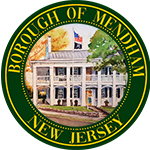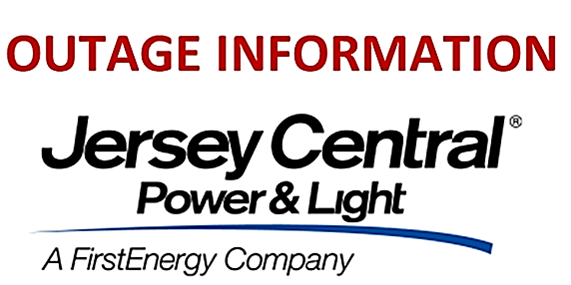Frequently Asked Questions
-
- Do I need approval for new or changes to existing signage?
Change of signage due to change of business use or ownership is part of the Planning Board or Board of Adjustment application. If the business is located in the Historic Business District, Historic Preservation Commission review is also required (See HPC forms). If the business is in the East Business District or the Limited Business District review by the Main Street Corridor committee may be required. In all cases after the required board, commission or committee review, a sign permit is required from the construction office.
- Do I need Board approval to open a business in an existing building?
Yes. All changes of occupancy in an existing building require Planning Board or Board of Adjustment approval. The proposed use should first be reviewed with the Zoning Officer. If it is a permitted use, an application (See Forms Center) must be made to the Planning Board for Site Plan approval or for Waiver of Site Plan depending on the facts of the case. If it is a non-permitted use, a “d” variance (Use Variance) would have to be sought from the Board of Adjustment, along with Site Plan approval or waiver.
- How do I know if the location I am considering is located in the Historic Business District or Main Street Corridor?
To determine if the location is located in one of the overlay districts, you can get an initial idea by viewing the Zoning Map in the Engineering Forms section or by visiting the Master Plan Historic Preservation section. Before you take any final decisions, you should verify with the Zoning Officer.
- How long will it take to get an approval?
There is no guarantee that approval will be given. Procedurally, however, after review of applications for completeness, presentation of the proposal and/or formal hearing, the Boards and Commissions make decisions based on Borough Ordinances and New Jersey Municipal Land Use Law. Timeframes for decisions are outlined in the Municipal Land Use Law. They vary by application and are subject to the Board calendar at the time of application.
In some cases of change of permitted use, the Planning Board has authorized its Technical Review Committee to review the application and make a decision. In most cases this expedites the process. The applicant should keep in mind, however that if there are any complexities or should the Planning Board want to hear the application, the process might be extended.
- What is the Main Street Corridor and how does it affect my ability to make improvements to my property?
Main Street is the major thoroughfare through town and provides a streetscape which defines Mendham Borough, not only to people passing through, but to residents as well. Main Street contributes to the present and future historic character of the Borough. The Historic District Overlay Zone and the Historic Business Zone Ordinances are designed to preserve the character of Main Street within the center of town. The Main Street Corridor Ordinance and the proposed expansion of the Historic District help to preserve the character end to end.
The Main Street Corridor is defined in the Borough Master Plan and runs from the eastern boundary of the Historic District along both sides of Main Street to Cold Hill Road. In December 2007, the Borough Council adopted an ordinance for special civic design elements for the Main Street Corridor.
The purpose of the ordinance is to help maintain the village streetscape through design features and location of structures in support of the Historic Business Zone and the Historic District Overlay Zone. The details of the ordinance can be viewed by visiting the Historic Preservation Commission web page and clicking on Ordinance 6-07.
The ordinance contains provisions for commercial and residential reviews of external improvements. In the case of Planning Board and Board of Adjustment applications, the ordinance will be implemented by those Boards respectively. In the case of improvements requiring permits only, a Main Street Corridor Design Review Committee will provide the review before permits will be issued.
In most cases, the design criteria are voluntary for residences and binding for commercial properties. Zoning regulations for locations of structures are applicable to both. Any questions dealing with your specific property should be directed to the Zoning Officer.
- What types of documentation are required for the various Land Use Applications to the Board of Adjustment and the Planning Board?
The Borough of Mendham has developed a Land Use Application Checklist that is inclusive of all application types. By referring to the checklist in the Land Use Forms section, and then identifying the application type and selecting the information identified with the dots, the applicant can determine the extent of the requirements. If the property is a rental, the landlord’s assistance is generally necessary. Depending on the type of application, the applicant may require the assistance of an attorney, architect, engineer or other professional. This checklist is completed by the applicants and must be submitted with the documentation and the application when filing.
- When is Historic Preservation Commission approval required?
Historic Preservation Commission approval is required for businesses and residences in the Historic District making any external improvements requiring building permits. The Historic Preservation Commission reviews all “permit only” applications and determines approval. In the case of Planning Board or Board of Adjustment applications, the Historic Preservation Commission makes a recommendation to the appropriate Board which has the ultimate authority. Examples of some of the approvals required can be viewed in the HPC forms section under “HPC review requirement examples”.
- Do I need approval for new or changes to existing signage?
-
- Did you notice a Street Light out?
If you notice that a street light is out you can contact the Police Department by sending us an email at mbpd@mendhannj.org or you may call us at 973-543-2545. When contacting us please give us the location of the pole and the nearest cross street.
- Did you notice a Street Light out?
-
- How can I landscape my yard in ways to reduce runoff and protect the environment?
Planting trees is one way to protect land and local streams from the damage caused by excessive runoff and erosion. Trees have long been appreciated for their beauty, but their help in minimizing erosion is not as well known. Landscaping by planting shrubs, trees and ground covers has definite environmental benefits and enhances the appearance and value of property. Realtors suggest that mature trees increase the value of homes as well as the speed of sale.
Plants and trees can create outdoor rooms where you and your family can work and play. Well-planned landscaping can reduce heating and cooling costs for your house by as much as 30 percent. New shrubs and trees may attract birds and wildlife. Trees, shrubs and ground cover also require less maintenance than grass. Because trees and shrubs require less fertilizer and fewer herbicides than grass, the chances of polluting streams is minimized.
Another possibility is landscaping for wildlife. By selecting appropriate plants, landscaping can both reduce water pollution and serve wildlife. Four basic elements are needed for wildlife: food, water, shelter and space. Food can be supplied through vegetation that provides seeds, nuts or berries. Water, if not available nearby as a stream or lake, can be provided as a small pool or pond. Vegetation, a pond or even a brush pile can serve as shelter, providing protection from predators and the weather. Space needs vary among wildlife but include enough room to reproduce, find food and carry on the different stages of their life cycle. The specifics depend on whether you are trying to attract a variety of wildlife or a certain species, such as butterflies or hummingbirds. For more information, contact DEP Division of Fish, Game and Wildlife, CN 400, Trenton, NJ 08625-0400.
An environmentally sensitive landscape reduces the erosive force of rainwater runoff and increases the value of your home. By planting trees, shrubs and ground cover, you encourage excess rainwater to filter slowly into the soil instead of flowing directly into storm drains or nearby streams. Choosing trees and plants that are appropriate for your soil and growing conditions will ensure that you will have a beautiful yard.
- How can I reduce runoff?
There are inexpensive ways to control excess runoff created by patios, driveways, sidewalks and roofs. Whatever the soil drainage condition in your neighborhood, landscaping and careful grading of your property's surface area can be used to control runoff, reduce its speed and increase the time over which it is released. For example, land immediately adjacent to your house needs to have a downhill slope so that water does not seep through the foundation. Once the water has been carried 10 feet from the house, the surface should be graded so that runoff is released gradually.
Surface runoff can be decreased and ground water infiltration increased by following these suggestions:
- Install gravel trenches along driveways or patios to collect stormwater and filter it into the soil.
- Plant sod on bare patches in your lawn as soon as possible to avoid erosion.
- Grade all areas away from your house at a gentle slope.
- Use a grass swale, which is a man-made depression, to move water from one area to another.
- Plant shrubs and trees to promote infiltration (see chapter on lawn and garden care).
- If you are building a new home or in a position to consider regrading your property, you may want to create a basin, which will hold all runoff and allow it to infiltrate the soil over a longer period of time. This should be done only where drainage is good. Alternatively, you may be able to create a gently rolling surface or a system of berms, or mounds, and swales to slow run-off. Berms and swales are slight elevations and depressions in the surface that provide channels along which water will flow. If you have a wet area, you may be able to move the basin to a less used area of the yard – around shrubs or trees, for example – by installing a swale to carry the water across the yard. Be advised that most activities performed in regulated wetlands require a permit. Contact DEP Land Use Regulation for information at (609) 292-0060. Plant trees and shrubs that thrive in wet soils in the new wet area.
- What are some simple changes I can make to protect our waters?
By following these few simple guidelines, you can make your home more attractive and help prevent erosion:
- Never dump motor oil, grass trimmings, leaves, animal waste or other pollutants into the roadway or stormwater catch basins.
- Landscape your yard to minimize rainwater runoff.
- Divert rain from paved surfaces onto grass to permit gradual infiltration.
- Preserve the established trees in your neighborhood, which help minimize the damage caused by surface runoff.
- Choose the appropriate plants, shrubs and trees for the soil in your yard; do not select plants that need lots of watering, which increases surface runoff.
- Consult your local nursery or your county’s Rutgers Cooperative Research and Extension office for advice on which plants, shrubs and trees will grow well in your yard.
- What is an impervious surface?
One method of reducing stormwater runoff is to minimize the amount of impervious surfaces such as concrete sidewalks and asphalt driveways. Impervious surfaces do not allow runoff to seep into the ground. Use pervious surfaces instead. A paving surface that allows water to soak in may seem impossible, but there are many materials that provide the durability of concrete while allowing rainwater to filter down into the ground. If you are planning a new patio, walkway or driveway, there are several attractive alternatives to concrete. Some examples of these needs are:
- Wood or recycled material decks, usually installed for their functional good looks, can serve as a form of porous pavement. Redwood, cedar and treated pine are as durable as most nonporous surfaces such as asphalt or concrete. Decking allows rainwater to soak into the ground beneath it, and the space between the planks provides ample room for precipitation to drain directly onto the soil surface. As long as minimal air space is maintained between the soil surface and the decking, wood rot can be minimized.
- If you are installing a new patio or rebuilding a crumbling sidewalk, you do not need to use the typical slab concrete. Using bricks, interlocking pavers or flat stones (flagstone, bluestone or granite), you can construct an attractive, durable walkway. If placed on well-drained soil or on a sand or gravel bed, these modular pavers allow rainwater infiltration. Avoid using chemicals to control weeds growing in the joints between the pavers; Corsican mint or moss can crowd out weeds and add beauty to the paved area.
- Pre-cast concrete lattice pavers also rest on a bed of sand and gravel and allow rain to soak slowly into the ground.
- Dutch drains, which are containers of gravel with holes used to infiltrate water from rooftops directly into the ground, carry water from rain spouts into the soil, where it gradually filters into the ground.
These types of materials can be used wherever natural soil drainage is good and there are no problems with either bedrock near the surface or seasonal high water table.
Significant strides have also been made in the last few decades in developing porous asphalt pavement. This material is similar to conventional asphalt in durability, but it contains a much smaller percentage of very fine particles. As a result, the asphalt allows water to soak through into the soil below.
- Where does stormwater go?
Stormwater flows directly into our rivers, lakes, streams and the ocean or into a stormwater system through a storm drain.
Storm drains are frequently located in parking lots and along the curbs of roadways. The grate that prevents larger objects from flowing into the storm sewer system is called a catch basin. Once below ground, the stormwater flows through pipes, which lead to an outfall where the stormwater usually enters a stream, river or lake.
In some areas, the outfall may lead to a stormwater management basin. These basins control the flow and improve the quality of stormwater, depending on how they are designed. They can also recharge groundwater systems.
In some urban areas of the state, the stormwater and sanitary sewer systems may be combined. Here both stormwater and sewage from households and businesses travel together in the same pipes and are treated at sewage treatment plants except during heavy rains. During these occasions, both the stormwater and untreated sewage exceed the capacity of the treatment plant, and this overflow is directed into local waterways.
- Why has stormwater runoff become such a problem?
Urbanization and increasing commercial and residential development have a great impact on local water resources. More impervious surfaces (roads, rooftops, parking lots and other hard surfaces that do not allow stormwater to soak into the ground) increase the rate of stormwater runoff. This means a greater volume of water carrying pollution into surface waters and less water soaking into the ground. These contaminants include litter; cigarette butts and other debris from sidewalks; motor oil poured into storm sewers; settled air pollutants; pet wastes; yard wastes; and pesticides and fertilizers from lawn care. Less water soaking into the ground also lowers ground water levels, which can dry up streams and hurt stream ecosystems, and can reduce the supply of well water.
Stormwater also erodes stream banks. This in turn degrades habitat for plant and animal life that depend on clear water. Sediment in water clogs the gills of fish and blocks light needed for subsurface plants. The sediment can also fill in stream channels, lakes and reservoirs, covering the bottom and negatively affecting flow, plants and aquatic life.
- How can I landscape my yard in ways to reduce runoff and protect the environment?










.jpg.png)



